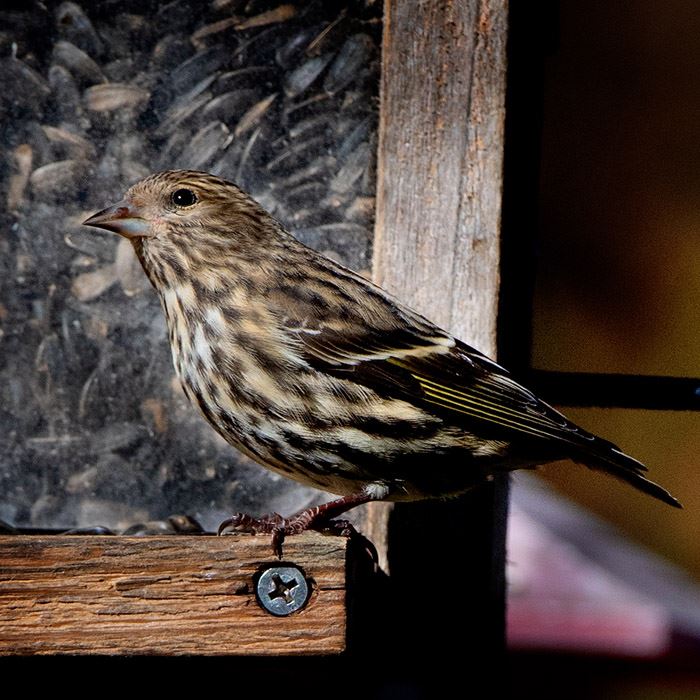Visitors from the North

By Karen Menard
Out at the feeders, there arose such a clatter
We sprang from our chairs to see what was the matter
Away to the window, we flew like a flash
tore open the shutters and threw up the sash
When what to our wondering eyes should appear but miniature birds eating seed, very near.
More rapid than eagles, more of them came
they whistled and warbled and sought out their claim
Now, nuthatch, now siskin, now crossbill and redpoll! On grosbeak, on sparrow, on finches and junco!
To the top of the roof, to the top of the wall
now, dash away, dash away, dash away, all!
‘Tis the season to watch for fast moving flocks of winter birds visiting from the north. Most of the species mentioned above may occasionally fly in to backyard feeding stations or seed-bearing conifers looking for a meal then quickly seem to disappear. Some, like pine siskins and red-breasted nuthatches, are more likely to visit a favorite station throughout the winter season.
Realistically, feeders mostly see smaller, sporadic flocks or a few individuals of one or two types of species at a time looking for oil sunflower seed or sunflower chips.
Pine siskins prefer to flock to thistle feeders, often feeding alongside American goldfinches. If you provide oil sunflower, you may be lucky enough to get a glimpse of a rare evening grosbeak, redpoll, crossbill or a purple finch if the winter conditions are right for that to happen.
Object reference not set to an instance of an object.
The birds noted here nest in the northern boreal forests, as well as the tundra for some. If needed, some years birds will expend energy to travel to northwest Ohio as well as other areas of the Midwest and Eastern North America searching for winter food because conditions up North are not conducive for good berry and cone crop production. Dependent on these food sources, nomadic finches then wander and migrate irruptively to other areas in search of food sources that will sustain their winter appetites.
Northern winds could be bringing a few species of winter finches to a field, forest, residential area or feeder near you this year. Consider setting up a feeding station with a thistle-filled tube feeder, as well as an offering of oil sunflower seed.
Or, take a trip during January or February to one of the Metroparks or a Window On Wildlife feeding station located at Wildwood Preserve, Secor, Pearson, Oak Openings Preserve, Side Cut and Swan Creek Preserve to seek out some of the beautiful winter bird species.
Did you know?
Each year, there is a winter finch forecast that details whether or not certain areas will see species. It can be accessed via this link:
https://finchnetwork.org/winter-finch-forecast-2020
__
Photos: Top, pine siskin (female) at a home feeder; above, red-breasted nuthatch